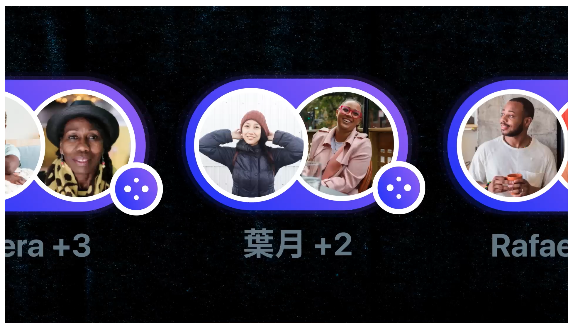Twitter Spaces, a feature which allows users to participate in live audio chats, is now available to everyone with 600 followers or more.
Launched in December 2020, Twitter Spaces was initially available to a small feedback group.
It’s not known what the criteria was for being accepted into the test group, but Twitter says millions of people have had access prior to today.
Now an improved version of Spaces is rolling out to all Twitter accounts with 600 or more followers. Updates have been made based on feedback from the initial group of users.
From now on the top of peoples’ Twitter timelines will look different, with more purple bubbles indicating when other users are hosting or participating a live audio conversation.

All users, regardless of follower count, can join a Space as a listener by tapping on the purple bubble.
A listener can participate via text chat and react with emojis. They can also send a request to speak in the chat.
Technically that means anyone can broadcast their voice via Spaces if they’re granted speaker status.
In addition to talking, a speaker can add pinned tweets to the Space, turn on captions, and share the space to their timeline so followers can join by tapping a link.
Speakers have more permissions than listeners, but it’s the host who has the greatest amount of privileges.
The host of a Space can control who’s speaking at any given time, change the topic of discussion, and grant speaker permissions to listeners. Hosts can even kick users out of a Space if they feel it’s necessary.
Twitter Spaces has other safeguards in place, such as letting anyone report and block other users. Though they won’t be blocked from the entire chat.
Users are prohibited from joining a Space if they’re blocked by the person who’s hosting it. Twitter displays labels and warnings if someone a user blocked is speaking in a Space they joined.
New features getting added to Spaces include an ability for hosts to mute all speakers at the same time, and access to a new management page for easier hosting.
Why 600 followers?
Twitter set 600 followers as the threshold because it’s more likely users with an existing audience will have a good experience hosting live audio chats.
The company plans to make Spaces available to everyone, but wants to learn more about how people use it.
More New Features On The Way
Twitter shares its plans for the next set of features rolling out to Spaces, which include monetization and improved discoverability.
Monetized Spaces
Hosts will soon be able to charge an admission fee for other users to join their chat.
A host can set the ticket price as well as a limit for how many tickets can be sold. A majority of revenue goes directly to the host.
Ticketed Spaces will be rolling out to a limited group in the coming months.
Schedules & Reminders
Users will soon be able to create a schedule of upcoming Spaces they plan to attend.
After a user adds a Space to their schedule, Twitter will send a reminder when it’s about to start.
Schedules and reminders are rolling out in the coming weeks.
Co-hosting
Twitter users can soon host Spaces with their friends. Both hosts will share the same privileges, which will be helpful when managing large chats.
In addition, this grants the ability for one host to leave the Space while the other host keeps it running.
Discoverability
Twitter will soon make it easier for people to find Spaces by adding purple bubbles around users’ profile photos.
This feature works the same way as the blue ring that indicates when a user published a story.
When a users tweets while hosting a space, a purple bubble will appear around their profile photo in other peoples’ timelines.
Accessibility
Spaces will become more accessible with improvements to live captions that allows hosts to pause and customize captions for greater accuracy. Users will also be able to scroll back and read captions they missed.
Twitter is exploring ways to improve its automatic captioning algorithm, and is looking to add support for more languages.
Source: Official Twitter Blog





![AI Overviews: We Reverse-Engineered Them So You Don't Have To [+ What You Need To Do Next]](https://www.searchenginejournal.com/wp-content/uploads/2025/04/sidebar1x-455.png)